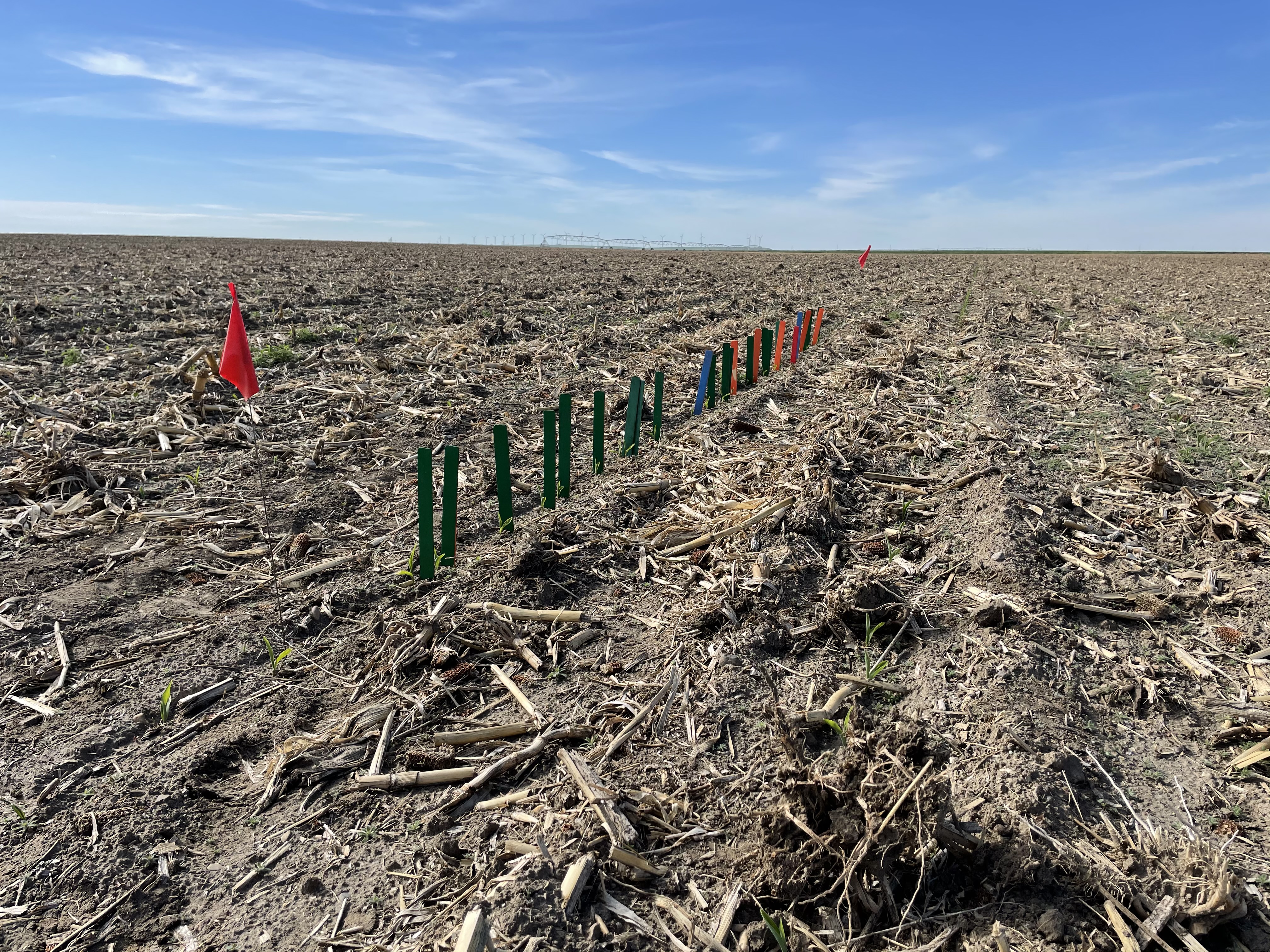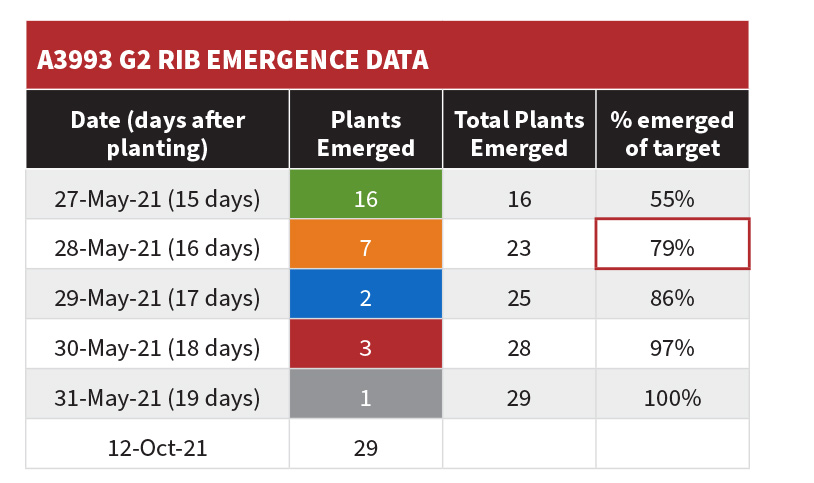Evaluating Plant Emergence at Harvest
“Even emergence is key.” This 4-word phase is critical for maximizing yield potential and it’s probably one the top five most common phases I use as a MDA. This season, I wanted to take a closer look at the value of even emergence and how yield is influence. To do this I used a hybrid trial planted on May 12, 2021 close to Taber, AB.
Before jumping into the numbers and data, here’s a quick recap on how plant emergence and yield potential was determined.
Procedure
Part 1: Flagging plant emergence.
After planting a 7-entry trial, my summer student and I flagged out 1/1000th of an acre in each hybrid in the trial. After that, emergence notes were taken every day for 5 days. Beside every newly emerged plant, a different colour stake was placed depending on the day it emerged (for example: green stake if it emerged on the first day and orange if it emerged the next day and so on).

Part 2: Estimating Yield
“Harvest” (remove from the stalk) the ears as close to harvest as possible and keep the ears organized based on what day (colour flag/stake) they emerged. Count and record the length and girth of every ear in each set. Use these values to determine an average. The equation below was used to determine yield potential. 90,000 is commonly used a standard as the number of kernels per bushel and considers average kernel size.
Yield = avg. length *average girth* population in 0.001 acres (29) / kernels per bushel (90)
Note: I do want to point out that when flagging this out these emergence trials, we unknowingly flagged them in a patch of unemerged kochia. As we all know, weed control is critical for corn from emergence to V6 (another phase in my top 3 commonly used phases). Overall, this would have impacted yield potential and resulted in only following 1 of 7 hybrids all the way through to harvest.
Results and Comments
Population Check: Target planting population was 34,000 plants per acre, however, the population in the field was closer to 29,000 plants per acre. This could be due to high residue levels in the field, cool soil temperatures and/or location when the emergence trial was located.
Emergence
My biggest take away from the emergence data on A3993 G2 RIB was that nearly 80% (79%) of the plants emerged within 2 days of each other. 80% emergence within 48 hours can be used as a target for farmers.

Completing part 1 of this experiment can provide vital information about hybrid spring vigour, planter performance and planting conditions to any farmers, sales representative or agronomist.
Yield Potential (Harvest)
From the table below, you can see that the plants that emerged the earliest have the highest yield potential. The 3 plants that emerged on May 30th did have a high average yield potential, but this does not consider the kernel size and inconsistencies in ear length and girth. The last plant that emerged on May 31st did not develop an ear due. This could be due to its late start and competition with its neighbours and potentially the weeds in this environment.

Summary/Conclusions
This is only data from 1 emergence trial from 1 field from 1 year, but it does support a lot of the research previously published, and it gives a visual and a small local data set.
Evaluating planter performance is critical when trying to increase emergence rates and when striving for more even emergence. Other factors that can affect uneven emergence is field reside, poor seed to soil contact, soil temperature variability, inadequate soil moisture.
By watching the emergence on every row unit in a few different locations in the field.
Targeting 80% of plant emergence within 48 hours of each other (higher is better) is a good target.

